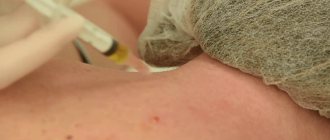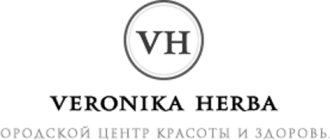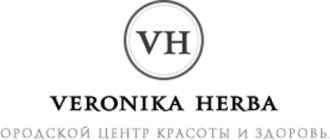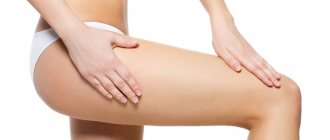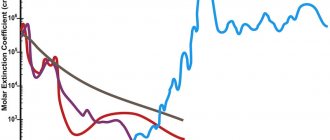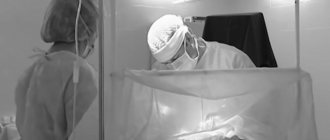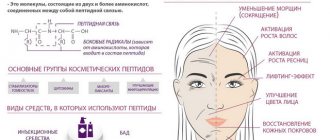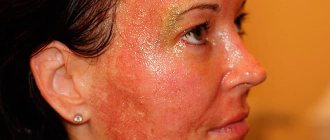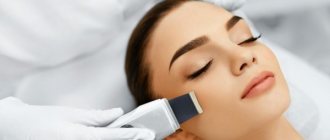What is the procedure
Mesotherapy of this type is the introduction under the skin using microinjections of vitamins A, B, C, E, K, amino acids, and useful minerals. As a result of their introduction, the dermis stops aging and becomes hydrated. The composition for administration is selected individually in each case, depending on the patient’s condition. Also, after the procedure, the specialist gives a number of tips on subsequent skin care so that it continues to remain in good condition. Vitamin cocktail mesotherapy is very popular and is an excellent alternative to contouring.
There are practically no unpleasant sensations during the procedure. The injections feel like a slight tingling sensation. After performing the technique, the patient will need to avoid drinking alcohol and drink more water to flush out toxins from the body. The result that vitamin mesotherapy gives is manifested in the elimination of minor cosmetic defects, stimulation of metabolism, filling the skin with moisture, and rejuvenation of the dermis. One of the side effects of the method is that minor bruising or redness may form. But usually they go away within a day. Otherwise, vitamins are very well absorbed by the dermis.
At what age can you get vitamin injections for your face?
When is the best time to take vitamin injections for the face?
Vitamin injections for the face are not useful at every age. To be more precise, before 25 you shouldn’t even resort to them. Ideally, it is better to postpone procedures until age 35.
The thing is that at 25 years old the body is still able to produce sufficient amounts of collagen and elastin on its own. But after this age, the process slows down somewhat, but the cells are still able to maintain the required level of substances.
At the same time, after 30, collagen begins to be sorely lacking and therefore the skin requires an additional stimulus to produce it. So vitamin injections can correct this deficiency.
What vitamins can be used in the process of mesotherapy
During the procedure, a vitamin cocktail with the following vitamins can be used:
- C – capable of removing age spots, whitens the dermis;
- A – restores the skin;
- E – rejuvenates the dermis, makes it smooth;
- B – relieves skin diseases.
In addition, glycolic acid, hyaluronic acid, calcium magnesium and plant extracts can be added to the cocktail. The most popular cocktail is a product consisting of hyaluronic acid and vitamins.
Features of therapy with vitamin C
The use of injections with vitamin C makes it possible to give the skin a healthy appearance, make it smooth, whiten age spots, and remove wrinkles. Often patients turn to a cosmetologist specifically with the problem of a lack of ascorbic acid in the body. To carry out the procedure, a substance with pure vitamin is used.
It gives a pronounced effect and helps lighten the skin by several tones. However, before getting rid of age spots, their cause should be identified, and after the procedure, special preventive measures should be taken.
What is mesotherapy for the face: types, indications and effect
Mesotherapy is a procedure that is always heard. “Let’s get some vitamin injections,” you hear in many beauty salons. We decided to find out why the procedure is so popular, whether it is worth going for it at the first signs of aging, and what its features are. An expert answers!
Maria Marusina
Cosmetologist, @dr.marusina
What is mesotherapy
Mesotherapy is the intradermal administration of various cocktails of active chemicals in microscopic doses. The name of the method “mesotherapy” comes from the term “mesoderm”. Mesoderm is an embryological layer that is formed in the womb and from which the connective tissue base of the skin, bones, cartilage, skeletal and cardiac muscles, blood vessels, blood cells, the urinary system and part of the genital organs subsequently develop.
Mesotherapy is a collective concept. It also denotes the name of the method, which involves many indications for use, and different techniques.
70 years ago, Michel Pistor first used this method to treat bronchial asthma and received unexpectedly good results. Now in traditional medicine, mesotherapy is used to treat migraines, rheumatism, herpes zoster and other diseases. But many girls associate this term specifically with cosmetology.
The essence of mesotherapy is that active substances are injected above the problem site into the upper layers of the skin, not deeper than the subcutaneous fat. Thus, the drug reaches its destination in the shortest possible way.
However, the dose of active ingredients in the mesotherapy cocktail is very small. This concept is reflected in the catchphrase of the author of the method, M. Pistor: “Little, rarely and in the right place.”
@angiecouple @hypebaebeauty
Types of mesotherapy
- Injection
- drugs are delivered to the middle layers of the skin using syringes with ultra-thin needles. - Hardware room
- the meso-cocktail is applied to the skin, and then this area is treated with the device’s nozzle. The permeability of the cell membrane during the procedure increases almost 400 times. - Using a mesoscooter - a special roller whose surface is covered with short thin needles. First, the drug is applied to the skin, and then rolled with a roller so that the meso-cocktail reaches the deep layers.
- Fractional
– microinjection technique. The injections are made with a special attachment with silver-coated microneedles. The insertion depth is up to several mm. - Oxygen
– the drug penetrates the skin under the pressure of a stream of oxygen. - Laser
– the skin is saturated with beneficial substances under the influence of an infrared laser.
A separate point is the “mesobotox” technique. It consists of administering botulinum toxin in low concentrations using mesotherapy techniques. Its goal is to reduce sebum secretion in patients with seborrheic dermatitis and acne. Plus, the surface tension of the skin decreases.
In this material we will analyze in detail the most popular type - injection mesotherapy for the face, body and hair.
@hypebaebeauty @xenia.lau
How the procedure works
Interestingly, for a good effect, not only the introduced composition of the cocktail is important, but also the fact of mechanical damage to the skin with a needle. In this way, fibroblast skin cells are activated, producing collagen and elastin - substances that make the skin elastic and taut.
Moreover, in classical mesotherapy, the procedure is performed without anesthesia in order to stimulate the neurohumoral response to pain and increase the release of biologically active substances. But everyone’s pain threshold is different, so not everyone can tolerate the unpleasant sensations from injections. In this case, an application anesthetic is used to make the procedure as comfortable as possible. But it is not possible to numb the scalp area.
Indications for mesotherapy
- age-related skin changes, decreased tone and elasticity;
- acne, post-acne;
- hyperpigmentation;
- rosacea, rosacea;
- local fat deposits, cellulite;
- scars, stretch marks;
- hair loss;
- preparation and rehabilitation after various types of manipulation.
The procedure is a medical procedure, therefore it must be carried out in a treatment room by a specialist - a cosmetologist, dermatologist or nurse, and only as prescribed by a doctor.
How often to do mesotherapy for face, body and hair
The method seems excellent, except for one big drawback: to obtain a significant effect, a course of 8-12 procedures is required, and in case of hair loss problems - 12-16 procedures with an interval of 7-10 days. This frequency is difficult for many patients to maintain, which makes mesotherapy less attractive when compared with other cosmetic procedures.
Contraindications
- allergy to cocktail components;
- low pain threshold, pathological fear of needles;
- acute diseases (ARVI, any illness with fever), herpes in the acute stage;
- epilepsy;
- skin diseases in the injection area;
- taking anticoagulants and blood clotting disorders;
- tendency to keloid scars;
- somatic diseases in the stage of decompensation;
- history of oncology (with the permission of the oncologist);
- pregnancy, lactation;
- minor age (can only be done with parental consent).
@angiecouple @angiecouple
The most common active ingredients in mesotherapy cocktails
- artichoke extract (lymphatic drainage, choleretic effect);
- ginkgo biloba extract (vasoprotective effect, antioxidant, improvement of microcirculation);
- DMAE (lifting, anti-inflammatory effect);
- coenzyme A (antioxidant effect);
- L-carnitine (lipolytic effect);
- sodium deoxyzolate and phosphatidylcholine (lipolytic action);
- caffeine solution (vasodilation, lipolytic effect);
- organic silicon solution (defibrosating effect);
- hyaluronic acid (moisturizing and regenerating effect);
- collagen hydrolyzate (increasing skin elasticity);
- vitamins (usually groups B and C);
- microelements (zinc, copper, magnesium, potassium, calcium, etc.);
- plant extract (dandelion, sweet clover, plantain, centella asiatica, etc.).
The doctor can independently compose the necessary cocktails for a particular patient, and can also make his own “author’s” mesotherapy mixes. But to do this, you have to buy a large number of ingredients separately and clearly know which components can be mixed and which cannot. This takes a long time and is not always convenient, so cosmetologists more often use ready-made cocktails, which are produced at the production level and do not require production costs.
@hypebaebeauty @xenia.lau
Restrictions and rehabilitation after mesotherapy
After the procedure, like any other injection technique in cosmetology, it is not recommended:
- drink hot drinks on the day of the procedure, alcohol 5 days after;
- do not visit the bathhouse, sauna, swimming pool and solarium for 5-7 days after;
- do not touch the puncture sites: do not get them wet for 12 hours and do not apply cosmetics.
If you are planning to spend your holiday in the “active sun”, sunbathing, then it is better to stop the course 2 weeks in advance to avoid the formation of hyperpigmentation.
The bumps after injections go away quickly, since most cocktails are liquid and quickly distributed. But it’s difficult to protect yourself from bruises. Swelling, redness and soreness are also possible for 1-3 days after.
Less common side effects: allergic reaction, granuloma formation, infection, suppuration and necrosis.
With proper care and a healthy lifestyle, the results of mesotherapy for the face, body and hair can last up to 1.5 years.
In order for salon treatments to retain their properties longer, it is necessary to properly care for your skin at home. Read about this in our materials!
Cover photo: @xenia.lau.
Why is this necessary?
Why such extremes - pricking your face with needles?
Some even feel bad just thinking about it. And some people go to such procedures regularly. Moreover, cosmetologists quite actively recommend these methods as an effective means of rejuvenation and even solving some dermatological problems. How does it work and what is the secret? Everyone knows that vitamins are vital for the skin. Why this is so and how the most important of them affect its structure and condition, I described in detail in other articles, which you can easily find on our website.
It would seem that if you pay a little attention to yourself, buy high-quality multivitamin complexes or use pharmacy forms of vitamins to prepare homemade masks, getting rid of their deficiency is easy and simple. But it was not there.
Only some of them, for example, ascorbic acid, are able to independently overcome the hydrolipid barrier and penetrate into the deep layers of the skin, where cells are actively dividing. The rest, when used externally, work exclusively in its upper levels. Accordingly, such procedures give results, but not the same and not as quickly as we would like.
During subcutaneous injections, individual vitamins or special cocktails are delivered directly to where they are needed. Moreover, inflicted microtraumas activate the body's defenses. He is forced to use internal reserves in order to restore the damage received as quickly as possible.
After multiple shallow injections, the following occurs:
- immunity sharply decreases and then becomes activated;
- blood flow to damaged areas of the skin increases;
- cells begin to divide more actively;
- metabolic processes are accelerated many times over;
- the structure of the skin becomes denser and its turgor increases.
That is, natural skin rejuvenation occurs, voluntary-forced, so to speak. Plus, the vitamins received during the injection help the processes listed above proceed as efficiently as possible and stimulate the growth of healthy, full-fledged cells.
Summing up
Injecting vitamins into the face can really give great results. I really hope that the article gave you an understanding of how serious invasive procedures are and what careful attention they require. There are no small details in them - from maintaining sterility to choosing the drugs used. Therefore, I am not very pleased with the modern availability of funds for carrying them out.
It will be interesting to hear about your experience and results after similar procedures. Tell us in the comments where you performed them, by what methods and means. Perhaps you made mistakes while doing it yourself, and you will want to share the consequences in order to warn others against them.
Contraindications
Since injection, even to a shallow depth, is an invasive procedure, there are quite a few contraindications to it. Needle mesotherapy in any form is not performed for:
- elevated body temperature;
- pregnancy and breastfeeding;
- exacerbation of chronic diseases;
- oncology and autoimmune diseases;
- active inflammatory processes;
- impaired renal and liver function;
- after severe or prolonged stress;
- with weakened immunity;
- on purulent acne;
- with advanced rosacea.
It is also necessary to take into account the presence of contraindications to the vitamins themselves, which I described in detail in the articles devoted to them. And also to additional ingredients, if present.
If you have sensitive skin or a tendency to violent allergic reactions, a tolerance test is required. Although I recommend doing it before the first use of drugs in any case, they still have direct contact with blood.
Indications for procedures
In order to prevent early aging, I recommend starting injections with vitamins or other useful ingredients in the face no earlier than after 30-35 years. Until this age, it is advisable to stimulate the processes of natural skin renewal using other, more gentle methods. An exception is when such injections are necessary and indicated for medicinal purposes.
This procedure is called mesotherapy. It is carried out in various ways, which I will talk about a little later. What they have in common is that the needle damages the integrity of the skin and penetrates it to a certain depth. The density of the chipping may vary.
Regardless of the type of mesotherapy, the indications for it are approximately the same:
- dryness and sagging skin;
- multiple small wrinkles;
- the presence of pigment spots;
- noticeable deepening of facial wrinkles;
- too enlarged pores;
- uneven complexion;
- bruises and bags under the eyes;
- appearance of a double chin;
- pronounced signs of aging;
- initial stage of rosacea.
When performed correctly and with the right selection of medications, mesotherapy can solve most of these problems in just a few sessions. For comparison, masks would have to be done regularly for 2-3 months to obtain a similar effect. So those who want to look good “tomorrow” should be patient a little.
Vitamin injections for the face - consequences: complications
Despite the fact that vitamin injections for the face receive a huge number of positive reviews, they do not always give good results. Sometimes you have to deal with very unpleasant consequences, such as allergies, pain in the treated areas or swelling.
Although this is very unpleasant, it is easily eliminated. As a rule, all this goes away on its own and no intervention from the doctor or patient is required.
At the same time, there are also consequences that can pose a health hazard:
- Formation of hematomas in treated areas
- Soft tissue necrosis, when cells die. The reason for this is that the needle or medication is inserted too deeply into the wrong place.
- Infection
One of the most dangerous consequences is a malfunction of the cardiovascular system. It can be recognized by decreased blood pressure, bradycardia, paleness and coldness of the hands and feet. This all appears rarely, but is quite possible. So, in order not to encounter unpleasant consequences, before the procedure you must make sure that the drug is safe using a test.
How much do vitamin injections for the face cost: price
Vitamin injections for the face - price
You must understand that vitamin injections for the face cannot a priori be cheap. The procedures are quite expensive. This is due to the fact that the drugs have a high cost, and the qualifications of the specialist play an important role. So if you decide to give yourself injections, then be prepared to fork out some money.
The average cost of the procedures is as follows:
- Mesotherapy – from 3,000 rubles
- Biorevitalization – from 6,000 rubles
- Fillers – from 9,000 rubles
- Botox – from 500 rubles per unit
How often do vitamin injections for the face?
Many people are also interested in how often they need to take vitamin injections for the face. This is determined by several factors. First of all, of course, is age. The condition of the skin is also taken into account. No less important is the purpose of the procedure. That is, if it is aimed simply at nourishing the skin, then there is no point in doing it often. Well, the drug itself also affects the frequency of repetition of the procedure.
In general, if you need facial rejuvenation, it is advisable to do the procedure once a year. If long-term action is not required, then injections can be given once every six months.
